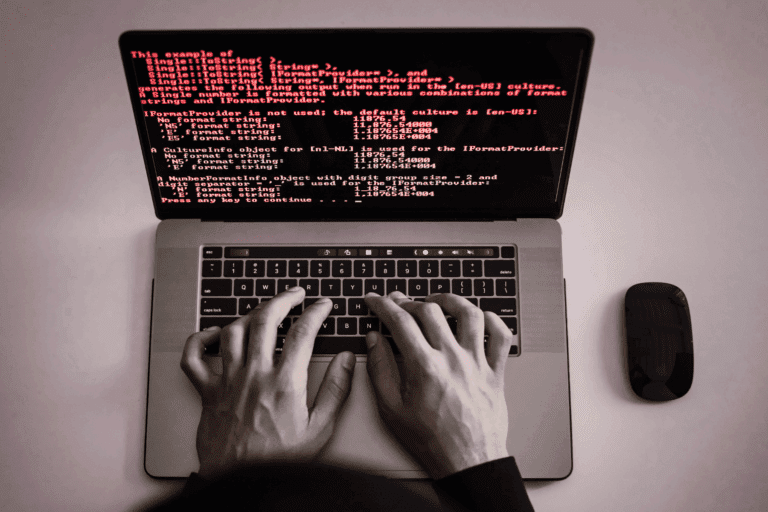What once seemed like distant horror stories about data breaches and ransomware attacks has become an everyday reality for accounting firms of all sizes. Artificial intelligence has fundamentally changed how cybercriminals operate, making attacks faster, more convincing, and significantly more challenging to detect. The rise of AI cyber attacks targeting accounting firms signifies a shift in the cyber threat landscape, where traditional defenses may no longer suffice.
For accounting firms, this evolution presents a particularly acute challenge. You manage sensitive financial data for countless clients, making your practice an attractive target. Understanding how AI is weaponized against your firm is no longer optional—it’s essential for survival. As we explore these threats, it’s crucial to acknowledge that AI cyber attacks targeting accounting firms are not just possible; they are happening now.
Table of Contents
The AI-Powered Threat Evolution
Traditional cyberattacks relied on volume and luck. Hackers would send thousands of poorly written phishing emails, hoping a few would land. Today’s AI-powered attacks are surgical in their precision.
Consider the transformation of phishing campaigns. According to recent industry data, creating a convincing phishing email once took approximately 16 hours of careful crafting. With AI assistance, that time has collapsed to just five minutes. More concerning, these AI-generated messages are grammatically perfect, highly personalized, and increasingly reference recent company events like mergers or personnel changes.
The extreme personalization makes these campaigns devastatingly effective. Even cybersecurity professionals—people who should know better—are being fooled. The emails arrive with contextually appropriate details, proper tone for each recipient, and timing that suggests insider knowledge. In reality, AI algorithms are simply excellent at scraping and synthesizing publicly available information.
Beyond Email: Deepfakes Enter the Picture
If sophisticated phishing wasn’t concerning enough, deepfake technology has introduced an entirely new dimension of threat. In one notable incident, finance professionals at a multinational firm participated in a video conference with what appeared to be their CFO and colleagues. The meeting seemed entirely legitimate—until they discovered they had just transferred $25.6 million to fraudsters using AI-generated video clones.
This wasn’t an isolated incident. Recent surveys found that over a quarter of executives reported their organizations experiencing deepfake attacks within the past year. More than half expect these attacks to increase in both frequency and sophistication.
The technology barrier has essentially disappeared. Where creating convincing deepfakes once required extensive source material, current AI tools can generate realistic audio with just 15 seconds of sample speech. As AI becomes more accessible through open-source models, the threat continues to democratize—meaning more attackers can deploy these tactics against smaller firms.
Why Accounting Firms Are Prime Targets
Your firm sits at a unique intersection of attractive characteristics for cybercriminals. You maintain detailed financial records, tax documents, and confidential business information for numerous clients. A single successful breach can provide access to dozens or hundreds of potential victims.
The numbers reflect this vulnerability. Data breaches in the financial services industry carry an average cost of approximately $5.56 million—significantly higher than the cross-industry average. For smaller accounting practices, a breach of this magnitude could prove existential.
Additionally, the trusted relationships accountants build with clients become attack vectors. Business email compromise schemes specifically exploit these relationships, with criminals impersonating legitimate contacts to manipulate transactions and redirect funds. Attackers scan email histories for keywords like “invoice,” “payment,” and “refund,” then inject themselves into ongoing conversations to alter payment details. Recent cases have seen individual losses exceeding $200,000 from this tactic alone.
Real-World Near Miss: Lessons from the Field
Understanding theoretical threats is important, but examining actual attacks provides crucial insights. A mid-tier accounting firm recently experienced a coordinated attack that nearly succeeded.
On a Tuesday afternoon at 3:15 PM—deliberately timed when people are rushing to finish their day—attackers called five employees posing as the IT helpdesk. Three weren’t at their desks. One struggled to hear and questioned the requests before the attackers disconnected. The fifth employee began following instructions before recognizing something seemed wrong.
The firm’s external security operations center detected unusual network activity within 30 minutes, and by evening, the threat was contained. The five targeted employees lost about half a day to system resets, but the attack was stopped before any real damage occurred.
This incident highlighted several important lessons. First, social engineering attacks remain highly effective—attackers successfully convinced at least one knowledgeable employee to begin complying with requests. Second, timing matters tremendously; end-of-day attacks exploit mental fatigue and the desire to resolve issues quickly. Third, rapid incident response proved crucial for limiting damage.
The firm turned this near-miss into a training opportunity, creating a video featuring the employees who received calls and distributing it company-wide within days. This approach made the threat tangible rather than theoretical.
Building Your Defense Strategy
Protecting your firm requires a multi-layered approach that acknowledges both the technological sophistication of AI-powered attacks and the human element of cybersecurity.
Strengthen Your Human Firewall
Your employees represent both your greatest vulnerability and your best defense. Move beyond annual compliance training toward frequent, brief refreshers on emerging threats. Conduct simulated attacks—including mock AI-powered phishing attempts—to test awareness and identify gaps. When employees know each other well and understand normal communication patterns, they’re more likely to spot anomalies that indicate deepfakes or impersonation attempts.
Enhance Technical Controls
Implement robust multi-factor authentication across all systems, while recognizing it’s not impenetrable. Review and strengthen internal controls around financial transactions, ensuring multiple verification steps for significant transfers. Consider establishing communication protocols that require requests for money transfers to come through specific, secure channels rather than email or unexpected calls.
Adopt AI-Powered Defense Tools
Fight fire with fire. AI-driven security solutions can detect anomalies in network traffic, identify unusual patterns in financial data, and even spot deepfakes in real-time video conferences. These tools learn continuously, updating their threat models as new attack vectors emerge anywhere in their network.
Prepare for Post-Breach Reality
Assume attackers will eventually gain some level of access. Design your defenses to detect intrusions quickly, contain them, and limit potential damage. Develop and regularly test incident response plans through tabletop exercises. Ensure cyber insurance coverage is adequate and accurately represents your security posture—small errors in policy applications have led to denied claims when coverage was most needed.
Moving Forward
The intersection of AI and cybersecurity presents undeniable challenges for accounting firms. However, understanding these threats and implementing comprehensive defenses can significantly reduce your risk profile. No single solution provides complete protection, but a combination of employee awareness, technical controls, and proactive monitoring creates meaningful barriers against even sophisticated AI-powered attacks.
The question is no longer if your firm will face these threats, but when—and whether you’ll be prepared to defend against them.


